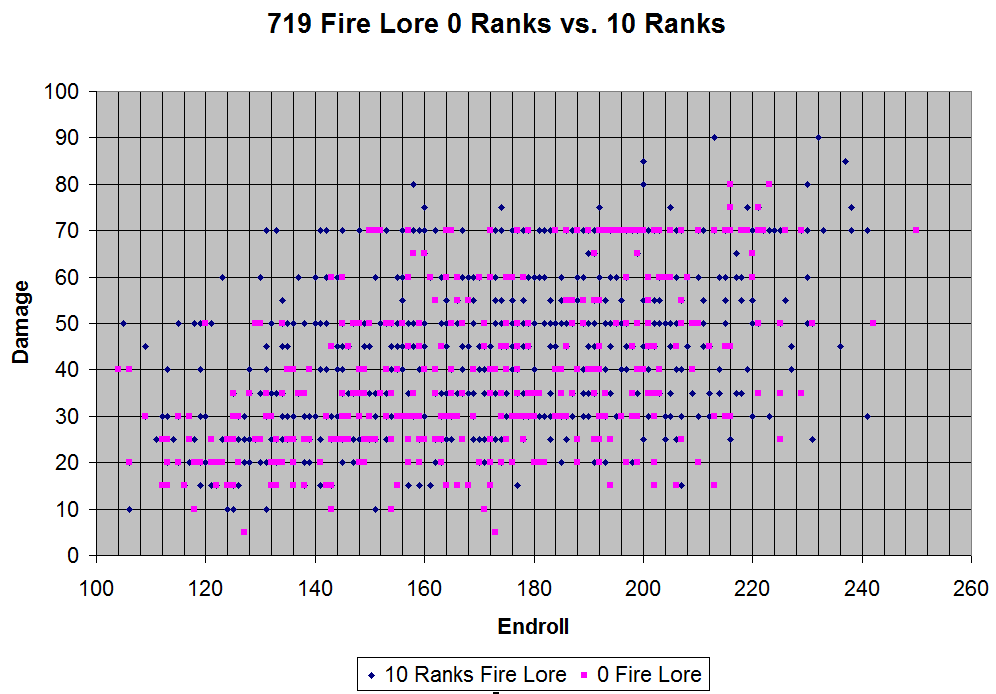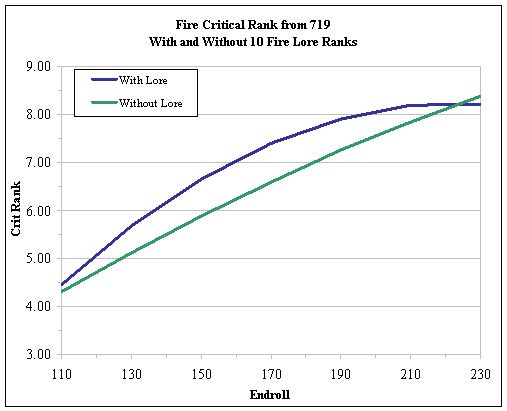405 Proposal
E-Lore Review is MIA. And I don’t remember 405 even being in the preview, but I feel strongly it needs work. It takes skill into account almost not at all, and in general just works pass fail. But rest assured, I’ve worked it all out:
When cast on yourself/others/monsters
Works as currently done, add lines to identify any current elemental resistances. It is “elemental detection” afterall, in lots of other games similar spells do this. “Critter is weak to fire.”
When cast on items
Currently this is just pass/fail if you know the spell, you can identify it, this should change. Like when cast on yourself when young and unskilled you can only identify known spells, but as you get more skilled you can start to identify other spells, and get durations too.
1 1d100 roll, used twice.
1. Spell detection: Take your mana control skill in the applicable sphere, plus your die roll, and divide by 10. If the level of the spell is less than or equal to the result, you are shown which spell is in the item. If you’re trying to detect a hybrid sphere (like empath) take the two mana controls and average them first. This would encourage off native mana control training for some people.
2. Spell charges: Take your MIU skill, plus your die roll, and divide by 10. If the number of charges left is equal to or less than the result, show the exact number of charges remaining. Otherwise, show “Too many for you to discern.” So the “too many” threshold would be different for each player, and each cast with the roll component. A maximally trained player would be able to detect up to 30 charges if they rolled a 100, 20 if they rolled a 2. A typically trained just-capped pure (1x) would be able to see a max of 20 charges if they rolled 100, 10 if they rolled a 2.
Use the same roll for both halves, should be more efficient that way, but because of training difference it would be possible, on say a minor mental spell, for a player to detect the charges well, but still not get the spell name.
Possible Forseen Resistance to Change
Bards: You’re stealing our turf, no one will love us anymore.
Response: This would not detect rechargability, so you will still be needed for that. Also, with the introduction of the enhancive treasure system, your work load ballooned exponentially. People need you more than ever to check their enhancives. Don’t worry, you still have a purpose.

